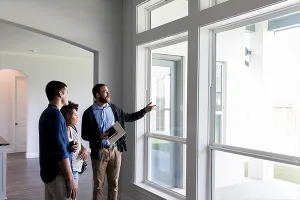NAR Library & Archives has already done the research for you. References (formerly Field Guides) offer links to articles, eBooks, websites, statistics, and more to provide a comprehensive overview of perspectives. EBSCO articles (E) are available only to NAR members and require the member's nar.realtor login.
Report Housing Discrimination
If you believe your rights may have been violated, we encourage you to report housing discrimination to the Office of Fair Housing and Equal Opportunity (FHEO) at the Department of Housing and Urban Development (HUD).
Fair Housing Resources for REALTORS®
2025 Fair Housing Month Toolkit (National Association of REALTORS®, 2025)
Download the Fair Housing Month poster and social media graphics, get ideas for Fair Housing Month activities, and learn more about Fair Housing grants.
Fairhaven 2.0: Essential Fair Housing Education (National Association of REALTORS®, Jan. 2, 2025)
“Fairhaven 2.0 is NAR's updated online tool that gives you a 360° view of fair housing. The update to NAR's popular Fairhaven simulation, Fairhaven 2.0, offers new eye-opening historical context, realistic scenarios, thought-provoking stories, award-winning videos, increased interactivity, and takeaways you can apply to your business. And it's a convenient way for REALTORS® to fulfill NAR's fair housing training requirement.”
Fair Housing Action Plan: ACT! (National Association of REALTORS®)
NAR's Fair Housing Action Plan, abbreviated ACT!, emphasizes Accountability, Culture Change, and Training, to advance fair housing in the industry. We raise awareness, deepen understanding, and hold ourselves accountable.
Fair Housing Compiled Resources (National Association of REALTORS®)
Collection of links to NAR resources to help and education REALTORS® and associations on fair housing.
Articles
HUD Terminates Affirmatively Furthering Fair Housing Rule (National Association of Home Builders, Feb. 28, 2025)
“Housing and Urban Development (HUD) Secretary Scott Turner announced yesterday that HUD is terminating the Biden-era Affirmatively Furthering Fair Housing (AFFH) rule. A press release issued by HUD noted this action would cut costly red tape imposed on localities and return decision-making power to local and state governments.”
An Apology from the National Association of REALTORS® (REALTOR® Magazine, Nov. 18, 2020)
“For the first time, NAR offers a full-on apology for racist practices of the past and vows to keep working to correct lasting inequities in housing.”
Lisa Rice’s Fight for Fair Housing Practices (Time Magazine, Feb. 1, 2024)
“The racial gap in homeownership in the U.S. is wider now than it was back when it was legal to refuse to sell a house to a family because they were Black. The difference is that in the ’60s, it was people who were turning minority families away; now it’s systems. “Our credit-scoring systems, our risk-based pricing systems, our automated underwriting systems, and many of the systems that we use in the housing and financial-services space are inequitable,” says Lisa Rice, 61, president and CEO of the National Fair Housing Alliance (NFHA). “The inequality is automated. So you have to be disruptive.””
U.S. Economy Will Benefit When the Racial Homeownership Gap is Finally Closed (National Association of REALTORS®, Oct. 18, 2023)
Learn from NAR’s Bryan Greene how, “bridging the homeownership gap isn't just about building a fairer housing market. It's crucial for building and sustaining thriving communities, and for growing the U.S. economy more broadly. By working to dismantle the obstacles that have long prevented Black Americans from accumulating wealth, policymakers, real estate industry leaders and realtors can help forge a lasting path to prosperity.”
Why Fair Housing is Key to Systemic Equality (ACLU, May 5, 2023)
“Few fights are more pivotal to ending systemic inequality than the fight for fair and stable housing. When Martin Luther King, Jr. launched a campaign to end slums in 1966, he connected the struggle to obtain decent housing with the need to end what he called slum schools, work, health care, and all forms of racial segregation. Today, fair housing remains the key to addressing deepening income inequality and forced displacement from our communities, as the long-lasting reach of discriminatory housing practices constantly shape who has access to quality education, health care, security, opportunity, and wealth.” This article breaks down why fair housing is critical to the fight for systemic equality.
Repairers of the Breach (REALTOR® Magazine, March 2021)
"Homeownership is the largest single contributor to intergenerational wealth for American families. But it has not been accessible to all Americans on equal terms. More than a half-century after passage of the federal Fair Housing Act, there remains a 30-percentage-point homeownership gap between white and Black Americans—the same as in 1968, the year the act was adopted. Black Americans own one-tenth the wealth of white Americans, despite earning, on average, about 60% of white Americans’ income."
Black Americans and the Racist Architecture of Homeownership (NPR, May 8, 2021)
"Last summer, DonnaLee Norrington had a dream about owning a home. Not the figurative kind, but a literal dream, as she slept in the rental studio apartment in South Los Angeles that she was sharing with a friend. At around 2 a.m., Norrington remembers, "God said to me, 'Why don't you get a mortgage that doesn't move?' And in my head I knew that meant a fixed mortgage." The very next morning — she made an appointment with Mark Alston, a local mortgage broker well known in the South LA Black community, to inquire about purchasing her very own home for the first time."
Videos
Many Rivers to Cross (National Association of REALTORS®, Apr. 3, 2024)
“As NAR commemorates the anniversaries of the Civil Rights Act of 1964 and the Equal Credit Opportunity Act of 1974, we explore the continued importance of these landmark laws and celebrate the 2024 Fair Housing Champion Award winners, who are overcoming obstacles to homeownership in their businesses and communities. Watch this timely event as NAR continues to work to eliminate discrimination and broaden homeownership opportunities.”
Home Access Denied (Greater Rochester Association of REALTORS® + Resistance Mapping, May 2023)
“In a new documentary co-created by the Greater Rochester Association of REALTORS®, a young activist-filmmaker states that historic housing discrimination is “a history we were not taught, but it’s a history we deserve to know.” It was that same spirit of inquiry and enlightenment that spurred the local REALTORS® to co-produce the 20-minute video resource in partnership with its community partner, the Antiracist Curriculum Project (ACP). The compelling and accessible content, told through the personal stories of two present-day local families, will be used in various settings throughout the community to explain the ongoing impact of redlining and racially restrictive covenants. A Fair Housing Grant from the REALTOR® Party helped make it possible.”
What Will It Take to Close the Racial Homeownership Gap? (National Association of REALTORS®, Apr. 27, 2022) | 1 hour
On April 27, 2022, NAR presented new research on racial homeownership gaps that are widening or closing too slowly; discussed policy proposals to close the gap with a panel of experts; and highlighted the inaugural winners of NAR’s Fair Housing Champion Award, sponsored by realtor.com®, who are “Being the Change” to increase access to homeownership in their businesses and communities.
Fair Housing in your Neighborhood – How to be an Agent of Change (National Association of REALTORS®, Apr. 26, 2022) | 1 hour
“Every April, the National Association of REALTORS® observes Fair Housing Month to commemorate the landmark 1968 Fair Housing Act in which U.S. law was established to prohibit discrimination in housing. Fair Housing Month signifies a recommitment to expanding equal access to housing. NAR staff experts Alexia Smokler, Bryan Greene, and Megan Haberle, Senior Director of Policy at the National Community Reinvestment Coalition, demystify local advocacy and outline real ways that you can make an impact. During the session, they discuss best practices for approaching local initiatives and spotlight resources, opportunities, including NAR grant support, and actions you can take to advance fair housing.”
Seven Days Documentary - 50th Anniversary of the Fair Housing Act (National Fair Housing Alliance, Jan. 26, 2018) | 9 minutes
"When a single gunshot rings out at a Memphis motel, civil unrest breaks out across the country. President Johnson, long frustrated by his inability to improve housing conditions for people of color, scrambles to use the crisis to push a fair housing bill through a reluctant Congress. With few days to spare and many arms to twist, he and two young Senators – Edward Brooke and Walter Mondale – attempt to pass the bill before the slain civil rights leader is laid to rest. The Fair Housing Act was ultimately passed just seven days after Dr. Martin Luther King’s untimely death. Produced by the National Fair Housing Alliance in collaboration with Nationwide, this short film reminds us of the backdrop that led to the passage of this landmark civil rights law and its deep significance, and compels us all to complete the unfinished work of the Act."
Housing Point: Fair Housing Act Video Download (REALTOR® Store, 2018)
“Signed into law in 1968, the federal Fair Housing Act turns 50 in 2018. As part of NAR’s commemoration of this milestone, NAR has updated its video designed to educate real estate professionals on how to comply with the Fair Housing Act. The updated video includes vignettes that real estate professionals may encounter. The video will highlight these scenarios and provide risk management tips to real estate professional on how to meet their obligations under the Fair Housing Act.”
Podcasts
Advocating for Change: Closing the Homeownership Gap (Drive with NAR Podcast, Nov. 10, 2024)
"Bryan Greene, NAR’s vice president of policy advocacy, reflects on the association’s advocacy successes and challenges from the 2024 elections, shares key policy discussions for 2025 and explores what’s needed to close the growing racial homeownership gap.”
How Fair Housing Training Helps You Live Your Values (Drive with NAR Podcast, Apr. 1, 2024)
“Many real estate professionals may think all they need to know about fair housing is what the law requires of them. “It’s more than just the law,” says Sabrina Brown, an instructor of NAR’s “Bias Override” course. “It’s how you treat people. It’s how you practice your business on a daily basis.” To truly evaluate whether you’re representing your entire community—start by examining your client base—you need to go deeper in your self-reflection. Host Marki Lemons Ryahl and two fair housing experts discuss how to use NAR’s new fair housing training requirement, which takes effect in 2025, as an opportunity to challenge yourself and your business practices for the better.”
‘Is This a Safe Neighborhood?’ Don’t Answer That (Drive with NAR Podcast, Apr. 17, 2024)
“Let’s say you have a buyer who heard about a mugging a block away from the home you’re touring, and that buyer asks whether she “needs to worry about that kind of thing around here.” Pause and use your situational awareness skills. What kind of neighborhood are you in? Depending on the circumstances, the client’s question could be a loaded one. And if you’re not thoughtful and careful about how you respond, you could easily introduce a fair housing problem. Listen as host Tracey Hawkins helps two real estate pros role play the scenario to come to the right answer.”
Reckoning with America’s Racial Residential Segregation | At Liberty (American Civil Liberties Union, Mar. 2, 2023)
“The Fair Housing Act of 1968 aimed to address this history and outlaw discrimination, but vague guidelines and weak enforcement mechanisms have left a lot unaddressed. In January, the Biden administration reinstated the Affirmatively Furthering Fair Housing Rule, which adds federal heft to the Fair Housing Act and mandates that localities submit plans for actively addressing segregation and proposes that cities and states that fail to meaningfully work towards their stated goal could face loss of funding.”
Reexamining Redlining with Todd Michney (UCLA Lewis Center for Regional Policy Studies, Feb. 8, 2023)
“In recent years, the story of residential segregation and discrimination — and especially the practice of redlining — has gained well-deserved prominence in U.S. housing discourse. Equally important, the federal government has been directly implicated in the development and institutionalization of redlining and similar practices. A key early player in this history is the Home Owners Loan Corporation, or HOLC, which commissioned the infamous “residential security” maps that separated residential neighborhoods into four categories, from green (best) to red (worst), based in no small part on racist assumptions about Black residents and homeowners — this is the origin of the word “redlining.” But while HOLC unquestionably has culpability in the racial disparities of the U.S. housing market, Todd Michney argues that the connection between HOLC and the institutionalization of redlining isn’t as direct or uncomplicated as is usually claimed.”
Fair Housing: Who's Being Left Out of the Conversation? | Drive with NAR (REALTOR® Magazine, Apr. 1, 2022)
“Three REALTORS® who identify with underrepresented minorities—Lorraine Arora, ABR, GRI, of Berkshire Hathaway HomeServices in Alexandria, Va.; Stephen Beard of Keller Williams Advisors in Oakland, Calif.; and Tim Hur, CRS, SRS, of Point Honors and Associates, REALTORS®, in Duluth, Ga.—share their experiences encountering discrimination in real estate. They offer first-hand advice on how to spot biases and avoid fair housing violations.”
Reports
State of Housing in Black America (National Association of Real Estate Brokers (NAREB), Nov. 2024)
The 2024 State of Housing in Black America (SHIBA) report presents a stark reality - homeownership is in a state of emergency for African Americans. James H. Carr and Michela Zonta have meticulously gathered the facts, statistics, and analysis, underscoring the persistent barriers that hinder Black homeownership. In 2023, the homeownership rate among Black households stood at a mere 45.7 percent, a sharp contrast to the 74.3 percent among White households and a significant drop from its peak of 49 percent in 2004…The 2024 SHIBA report demonstrates that Black homeownership is hampered by a mortgage finance system that continues to discriminate. Black mortgage applicants are turned down more often than Whites; Blacks are more likely to receive high-cost home loans than their White counterparts, and houses in Black neighborhoods are less likely to be appraised at the same values compared to similar homes in white communities. But most alarming may be that while Blacks have recently had a historically strong presence in the labor market, it is not prompting increases in homeownership.”
State of Asia America (Asian Real Estate Association of America, 2024)
One of the core aspects of the American Dream is owning a home. A place where you can feel safe, raise a family, build a life, and host awesome cookouts. It’s been the subject of years of policy, references in media, and is one of the most ubiquitous signs of wealth and success in this country. But for many, this has become increasingly out of reach. Housing affordability and the share of first-time homebuyers are both near historic lows. With these factors in mind, where is the Asian American, Native Hawaiian, and Pacific Islander (AANHPI) community in its journey to attain the American Dream?
State of Hispanic Homeownershippdf (National Association of Hispanic Real Estate Professionals (NAHREP), 2023)
“The 2023 State of Hispanic Homeownership Report® is in its fourteenth year of publication, a product of both the National Association of Hispanic Real Estate Professionals® (NAHREP®) and the Hispanic Wealth Project. The report coalesces research and data across a broad cross-section within and outside the housing industry. It serves to evaluate how the U.S. Latino/a population is faring in terms of homeownership acquisition, and to review the primary opportunities and barriers to future homeownership growth.”
A Snapshot of Race and Home Buying in America (National Association of REALTORS®, 2024)
“This report looks at homeownership trends, mortgage market and affordability by race, and home buyer demographics from the 2022 Profile of Home Buyers and Sellers, home buyers and fair housing.”
2024 Fair Housing Trends Report (National Fair Housing Alliance, Jul. 7, 2024)
“This 2023 Fair Housing Trends Report is the latest in a series of annual reports about fair housing trends that NFHA has produced since the mid-1990s. The most important finding of this report is that the number of housing discrimination complaints reached the highest number of complaints ever reported in a single year. There were 34,150 housing complaints in 2023, compared to 33,007 in 2022.”
Black Homebuyers in 50 Largest US Metros 1.6 Times More Likely to Be Denied for Mortgage Than Overall Population (Lending Tree, Jul. 24, 2023)
“A LendingTree analysis of 2022 Home Mortgage Disclosure Act (HMDA) data finds that the share of Black homebuyers denied mortgages is notably higher than the share among the overall population. Specifically, we found that the purchase mortgage denial rate for Black homebuyers across the 50 largest U.S. metros is an average of 5.30 percentage points higher than the denial rate for the overall mortgage borrower population.
Fair Housing Organization Websites
National Fair Housing Alliance
“The National Fair Housing Alliance (NFHA) works to eliminate housing discrimination and to ensure equal housing opportunity for all people through leadership, education, outreach, membership services, public policy initiatives, community development, advocacy, and enforcement.”
University of Illinois Chicago Law Fair Housing Legal Support Center & Clinic
"The Fair Housing Legal Support Center & Clinic is dedicated to educating the public about fair housing law and providing legal assistance to private or public organizations that seek to eliminate discriminatory housing practices."
Office of Fair Housing and Equal Opportunity (FHEO) (U.S. Department of Housing and Urban Development)
“The mission of the Office of Fair Housing and Equal Opportunity (FHEO) is to eliminate housing discrimination, promote economic opportunity, and achieve diverse, inclusive communities by leading the nation in the enforcement, administration, development, and public understanding of federal fair housing policies and laws.”
eBooks & Other Resources
eBooks.realtor.org
The following eBooks and digital audiobooks are available to NAR members:
Fair Housing and Civil Rights Collections (eBooks and Audiobooks)
From Foreclosure to Fair Lending, Advocacy, Organizing, Occupy, and the Pursuit of Equitable Credit (eBook)
Housing Segregation in Suburban America Since 1960 (eBook)
Making Housing More Affordable (eBook)
The Color of Wealth (eBook)
Books
As a member benefit, the following resources and more are available for loan through the NAR Library. Items will be mailed directly to you or made available for pickup at the REALTOR® Building in Chicago.
The Fight for Fair Housing : Causes, Consequences, and Future Implications of the 1968 Federal Fair Housing Act (New York, NY: Routledge, 2018) HD7288.76.U5 F54 2018
Moving Toward Integration : The Past and Future of Fair Housing (Cambridge, MA: Harvard University Press, 2018) HD7288.76.U5 S27 2018
The One-Way Street of Integration Fair Housing and the Pursuit of Racial Justice in American Cities (Ithaca, NY: Cornell University Press, 2018) HD7288.76.U5
The Color of Law: A Forgotten History of How Our Government Segregated America (New York, NY: Liveright Publishing Corporation, 2017) E185.61 .R8185 2017
Have an idea for a real estate topic? Send us your suggestions.
The inclusion of links on this page does not imply endorsement by the National Association of REALTORS®. NAR makes no representations about whether the content of any external sites which may be linked in this page complies with state or federal laws or regulations or with applicable NAR policies. These links are provided for your convenience only and you rely on them at your own risk.













































